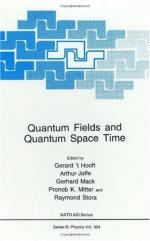|
This section contains 1,621 words (approx. 6 pages at 300 words per page) |

|
Quantum mechanics describes the relationships between energy and matter on the atomic and subatomic scale. At the beginning of the twentieth century, German physicist Maxwell Planck (1858–1947) proposed that atoms absorb or emit electromagnetic radiation in bundles of energy termed quanta. This quantum concept seemed counter-intuitive to well-established Newtonian physics. Advancements associated with quantum mechanics (e.g., the uncertainty principle) also had profound implications with regard to the philosophical scientific arguments regarding the limitations of human knowledge.
The classical model of the atom evolved during the last decade of the nineteenth century and early years of the twentieth century was similar to the Copernican model of the solar system where, just as planets orbit the Sun, electrically negative electrons moved in orbits about a relatively massive, positively charged nucleus. Most importantly, in accord with Newtonian theory, the classical models allowed electrons to orbit...
|
This section contains 1,621 words (approx. 6 pages at 300 words per page) |

|


